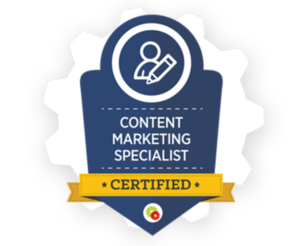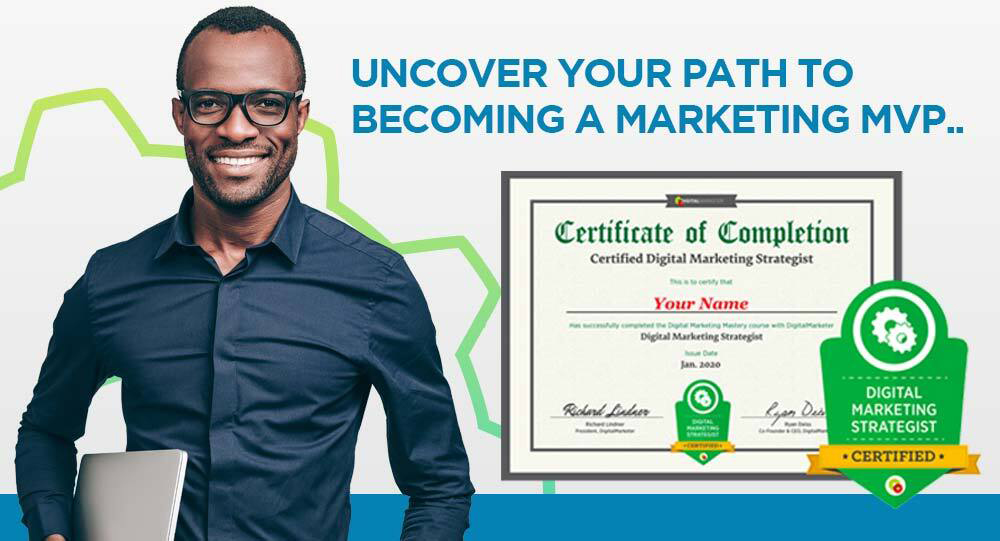MARKETING
How Content Marketing is Like a First Date

It’s Friday. You’re finally going out with that person you met online. You’ve been talking for weeks, and you’re excited to see them in person at last. The outfit you’ve chosen is perfect. That fresh haircut is serving you well. One spritz of perfume, and then you’re out the door.
Only, when you get to the bar, your date isn’t who you thought they were. They don’t look anything like their picture, you can’t get a word in edgewise, and you can’t get out of there fast enough.
Sound familiar? This kind of interaction is all too common in the dating world, and unfortunately, it happens a lot in the world of content marketing too.
5 Main Reasons Content Marketing is Like a First Date
Marketing is about building relationships. All too often, marketers treat it as an opportunity to hijack the conversation and aggressively pursue the customer. But this doesn’t work in dating and definitely won’t fly in marketing.
The goal of marketing and dating are the same: a long-term, mutually beneficial relationship. But more than that, there are five main reasons content marketing is like a first date.
- Gradual Connection. Like two people on a first date, it takes time for your customers to get to know your business. Sharing openly and honestly is the only way to build that connection over time.
- Fostering Engagement. Allowing your customers to join the conversation is crucial for making them feel valued. It’s like a conversation with a date where you ask them more about themselves.
- Building Credibility. It takes time for people to believe and trust what you say. Credibility is built slowly by sharing valuable information in conversation or online content.
- Gaining Trust. In dating and marketing, you have to share about yourself and show that your actions match your values before dates or that customers will trust you.
- Succeeding with First Impressions. Your date wants to know they aren’t wasting their time with you, and your customers want to know they’ve come to the right business for the help they need. To reassure them, you need to give a good first impression that puts them at ease.

The similarities don’t end there, and there are many steps you can take in your content strategy, so your brand doesn’t get ghosted.
Understanding Gradual Connection
Long-term relationships are comfortable, but first dates can be anxiety-inducing and awkward. It can be difficult to find common ground and build a connection when you don’t know someone. The same is true of marketing and customer acquisition.
Your content needs to make a good first impression. When potential customers come to your website or see your social media posts, it’s about building a gradual connection with them. Here’s what you need to remember when it comes to that connection.
Building a Bond Takes Time
While love at first sight may exist in romance novels, it’s not so common in marketing. Building a connection takes time. Your customer needs to get to know your brand through your content. That’s why creating quality content is important – you’re sharing why you’re trustworthy.
Your brand voice and the information you share show your customer that you know what you’re talking about and they can trust you. You can’t build this connection with just one blog post. Showing up consistently and sharing high-quality content is the only way.
Don’t Rush Expectations
You wouldn’t expect a marriage proposal at the end of the first date, so don’t look for your customers to purchase after seeing your content for the first time.

Creating high-value, search-engine-optimized content is crucial to getting your customers to your website. But once they’re there, don’t assume they’ll buy immediately.
Instead, give them opportunities to continue the relationship. Encourage them to follow you on social media or sign up for your newsletter. Give them some space to get to know your brand. And while you’re doing that, continue sharing information that answers all their questions.
Focus on the Audience
A common break-up cliché is, “It’s not you. It’s me.” But in content marketing, it’s not about you. It’s your audience. Focus on their needs as you’re creating content. Think about what questions they have. What resources will help them most?
Once your SEO content brings them to your website, how will you nurture the relationship? It would be a shame to bring your audience to your site only to lose them once they’ve found the answer to one question. Ask yourself how you can continue to serve them once they find your content.
Fostering Two-Way Engagement
You’ll get the first date if you have a great online dating profile. But if you spend that whole first date talking about yourself, you’re not going to get a second one. The same is true for content marketing. Fostering two-way engagement is how the relationship is built.
To Keep the Conversation Going in Your Marketing:
- Inspire Engagement from Your Audience. Ask questions in your content and encourage readers to comment or interact with your posts. Create interactive content like quizzes.
- Don’t Just Talk About Yourself. Instead, think about why your audience came to you. Answer their questions, solve their problems, or simply entertain them.
- Connect with Mutual Interests. Share your company values in your content and actions. These will help you connect with your ideal customer.
- Listen to Your Audience. If you find you’re getting a lot of similar questions from your audience, it’s a sign you need to make some content around those questions. Don’t be afraid to survey them to find out what they need from you.
- Use Emotional Language. Your audience found you online because they have a problem they need to solve. Their problem may be business as usual to you, but it’s something that’s a concern for them, and they want to feel like you understand where they’re coming from.
- Appropriately Respond. Whether they’re leaving comments on your posts or their feedback shows they need something that hasn’t been addressed, make sure you respond.

Want to get certified in Content Marketing?
Leverage the tools and channels to predictably and profitably drive awareness, leads, sales, and referrals—EVERYTHING you need to know to become a true master of digital marketing. Click Here
Building Credibility
Have you ever noticed that “be yourself” seems to be the go-to advice for dating, brand building, and pretty much everything else? There’s a good reason for that, which all comes down to credibility. Your audience needs to be able to trust you, and you have to build credibility with them for that to happen.
To Build Credibility:
- Be Authentically You. Being yourself is important because your audience knows when they see a faker. Share openly and honestly about your brand and what it stands for.
- Don’t Sugarcoat Your Business. You don’t have to make your business overly attractive or acceptable to people who aren’t your ideal customers. Focus on sharing the truth about what you do with the people who need your product or services.
- Don’t Undersell. You work hard, so don’t price your services cheaper than they should be or undervalue what you do. Part of being yourself is knowing your worth.
- Be Honest & Kind. Keep your messaging true to your company and what you do, and be nurturing and generous in the information you share.
Gaining Audience Trust
Once you’ve built your credibility, you can finally gain the trust of your audience. Think about trust in a relationship. You don’t just give it on the first date. That first date is probably in a neutral location because of how little trust justifiably exists. People earn trust over time through actions and authentic connection. The same is true for building trust with your audience.
To Gain Your Audience’s Trust:
- Be Respectful and Understanding. Show your audience you know where they’re coming from. Listen to their feedback.
- Respond Quickly. If they come to you with a question, they respect your knowledge. Hiring a community manager to respond to their questions quickly can help you become their go-to source of information.
- Be Consistent. Make content consistently by following an editorial calendar and regularly responding to questions and comments (including those on social media).
- Backup What You Say with Actions. Anyone can hop on the internet and say whatever they want. The brands that do what they say they’re going to do are the ones people trust.

Succeeding with First Impressions
Now, back to the first date. It’s your one shot to make a good first impression. The same is true for your company’s content. So, how do you get your audience to return after the first impression?
Ask for Continued Interaction
Encourage your audience to comment on your posts, follow you on social media, and sign up for your newsletter. Make it clear that you have more content on the way to answer their questions, and they won’t want to miss it.
When creating your editorial calendar, think about how to make one post into a series. It will get your audience to keep coming back to learn more.
Link to your older posts in your newer posts where appropriate, and continue to give your audience more reasons to stay on your site and learn more about your brand.
Using Calls to Action After Trust is Built
After you’ve built trust with your audience, they’re more likely to follow your calls to action. So don’t worry about selling in your posts. Instead, focus on giving your audience more valuable information.

Not many customers purchase after reading one blog post. Focus on putting your calls to action where you’ve already built trust. A newsletter is a great place for that. Those subscribers are already interested in what you do, and they trust you with their email addresses. They’re more likely to follow a call to action than a casual blog reader.
Follow Up & Reach Out
When you receive questions or comments from your audience, respond quickly, and follow up later to see how they’re doing. Ask if they need more help or how applying your advice went for them. Follow-up shows that you care about how they’re doing and that they aren’t just nameless followers to you. It shows your brand truly cares and can be a game-changer in building trust.
Get the Second Date
Every business can and should use marketing, but it’s not all created equal. Your audience wants authenticity and a connection before they open their wallets. Taking the time to make a good first impression is the first step to building customer loyalty and mutually beneficial relationships.


















